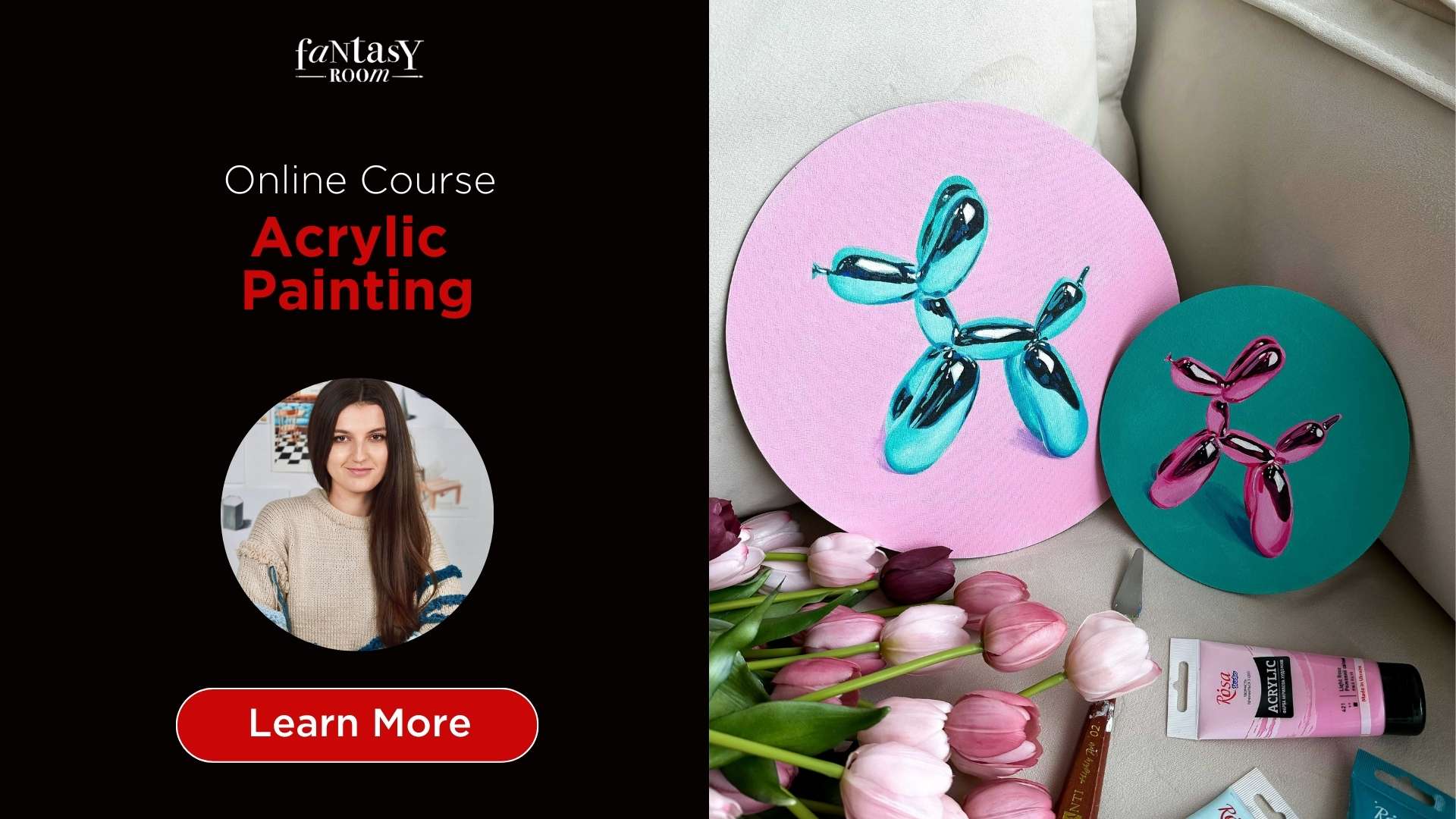For many artists, the notion that acrylics are better suited for a kindergarten classroom rather than a professional painter's studio often originates during their time in art school. Professors often enforce unwritten rules such as avoid painting large sculptures in red, refrain from placing circles at the center of compositions, and serious artists exclusively use oils, not acrylics. This last assumption, perpetuated from one pretentious painter to another, is, in many respects, a significant misjudgment.
Since its emergence in the mid-20th century, acrylic paint has offered artists an alternative to toxic, expensive, and slow-drying oil paints. Over time, it has evolved into a remarkably safe and vibrant painting medium. Despite its initial challenges, renowned artists began to recognize the unique qualities of acrylics and began incorporating them into their artistic practices. Thus, to bridge the gap between the esteemed tradition of oil painting and the relatively newer plastic medium, we've outlined some of the key advantages of using acrylic paints.
Since its emergence in the mid-20th century, acrylic paint has offered artists an alternative to toxic, expensive, and slow-drying oil paints. Over time, it has evolved into a remarkably safe and vibrant painting medium. Despite its initial challenges, renowned artists began to recognize the unique qualities of acrylics and began incorporating them into their artistic practices. Thus, to bridge the gap between the esteemed tradition of oil painting and the relatively newer plastic medium, we've outlined some of the key advantages of using acrylic paints.

You only need a few simple tools
Acrylics are not a high-maintenance medium. While oil painting demands a plethora of supplies (including paints, solvents, brushes, gesso, canvas, and a well-ventilated workspace), acrylic painting requires just four basic tools: the paint itself, a brush, a cup of water, and a surface (commonly referred to as a support). Compared to the intricate cleanup process associated with oil paints, which involves solvents, safe disposal methods, and tedious brush cleaning, acrylic cleanup is a breeze. With acrylics, excess paint on a palette can be easily scraped off and wiped clean with a damp cloth, or left to dry and peeled away later.
You can manipulate its consistency and texture
Acrylic paints offer remarkable versatility in terms of their texture and consistency. By incorporating mediums—additives that alter the thickness or thinness of the paint—acrylics can mimic the properties of other types of paint. For instance, adding an acrylic retarder to your paint can extend its drying time, resembling the behavior of oil-based paints. Additionally, various mediums can be used to create effects such as crackling, shimmering, or accelerating drying.
To fully grasp how mediums affect paint, it's helpful to understand five key terms: viscosity, rheology, luster, relative coverage, and texture. Each of these factors contributes to the paint's behavior—viscosity refers to its thickness, rheology to its flow, luster to its sheen, relative coverage to its transparency, and texture to its tactile quality.
For artists transitioning to acrylics from other mediums like watercolors, experimenting with mediums can facilitate adjustment to acrylic paint's characteristics. By employing mediums, painters can customize the appearance and behavior of their acrylics to suit their preferences.
To fully grasp how mediums affect paint, it's helpful to understand five key terms: viscosity, rheology, luster, relative coverage, and texture. Each of these factors contributes to the paint's behavior—viscosity refers to its thickness, rheology to its flow, luster to its sheen, relative coverage to its transparency, and texture to its tactile quality.
For artists transitioning to acrylics from other mediums like watercolors, experimenting with mediums can facilitate adjustment to acrylic paint's characteristics. By employing mediums, painters can customize the appearance and behavior of their acrylics to suit their preferences.

Embark on a transformative artistic journey with our online course, "Acrylic Painting," designed to help you navigate and overcome most of th Acrylic Painting Mistakes. In this comprehensive course, we delve into a thorough materials review, uncovering the best acrylic paints and brushes that will become your artistic allies. Our step-by-step tutorials, led by professional tutors, guide you through the mesmerizing process of creating stunning abstract artworks, capturing the essence of still life compositions, and painting breathtaking landscapes that transport you to serene vistas.
Acrylics offer versatility in where you can paint
Unlike oil paints, which require a well-ventilated space due to their hazardous fumes, acrylics can be used virtually anywhere. Whether you prefer to work in your bedroom, kitchen, or living room, acrylic paints provide a safe and convenient option. Since they are water-based and do not require solvents, there are fewer harmful emissions. Additionally, acrylics are gentler on the skin compared to oil paints, making them an ideal choice for artists concerned about safety and accessibility.
Acrylics dry fast, so you can layer colors quickly
One of the primary advantages of acrylic paints is their fast drying time, allowing artists to layer colors quickly. Unlike oil paints, which can take days or even weeks to dry, acrylics dry within a few hours, enabling artists to build up layers of paint rapidly. To enhance this technique, artists can thin out their acrylics with a glazing medium, composed of liquid polymer resins, to achieve greater transparency and fluidity in their paint application. This rapid drying characteristic of acrylic paints offers artists greater flexibility and efficiency in their creative process.

Your paintings can become sculptural
Acrylic paints offer artists a unique opportunity to transcend traditional painting techniques and explore three-dimensional forms. Unlike oil paints, watercolors, or wax-based paints, which are typically confined to the surface of a canvas or paper, acrylics possess the remarkable quality of being able to take on sculptural characteristics. Artists can peel dried acrylic paint off of non-stick surfaces and manipulate it into sculptural shapes, blurring the boundaries between painting, sculpture, and collage.
This versatility opens up new avenues for artistic expression, allowing artists to experiment with texture and dimensionality in their work. Many artists embrace acrylics precisely for their sculptural potential, using them to build up layers of paint and create intricate textures on their surfaces. By incorporating acrylics into their practice, artists can push the boundaries of traditional painting and explore innovative ways to engage with their materials.
This versatility opens up new avenues for artistic expression, allowing artists to experiment with texture and dimensionality in their work. Many artists embrace acrylics precisely for their sculptural potential, using them to build up layers of paint and create intricate textures on their surfaces. By incorporating acrylics into their practice, artists can push the boundaries of traditional painting and explore innovative ways to engage with their materials.
To sum up
In conclusion, while oil paints have long held a revered status in the art world, acrylic paints offer a host of benefits that make them a compelling alternative for artists of all levels. From their ease of use and versatility to their fast drying time and sculptural potential, acrylics present exciting opportunities for exploration and experimentation. By embracing acrylic paints, artists can unlock new avenues of creativity, pushing the boundaries of traditional painting techniques and discovering innovative ways to express their artistic vision. Whether you're a seasoned painter looking to try something new or a beginner eager to dive into the world of art, experimenting with acrylics is a journey worth embarking on.











